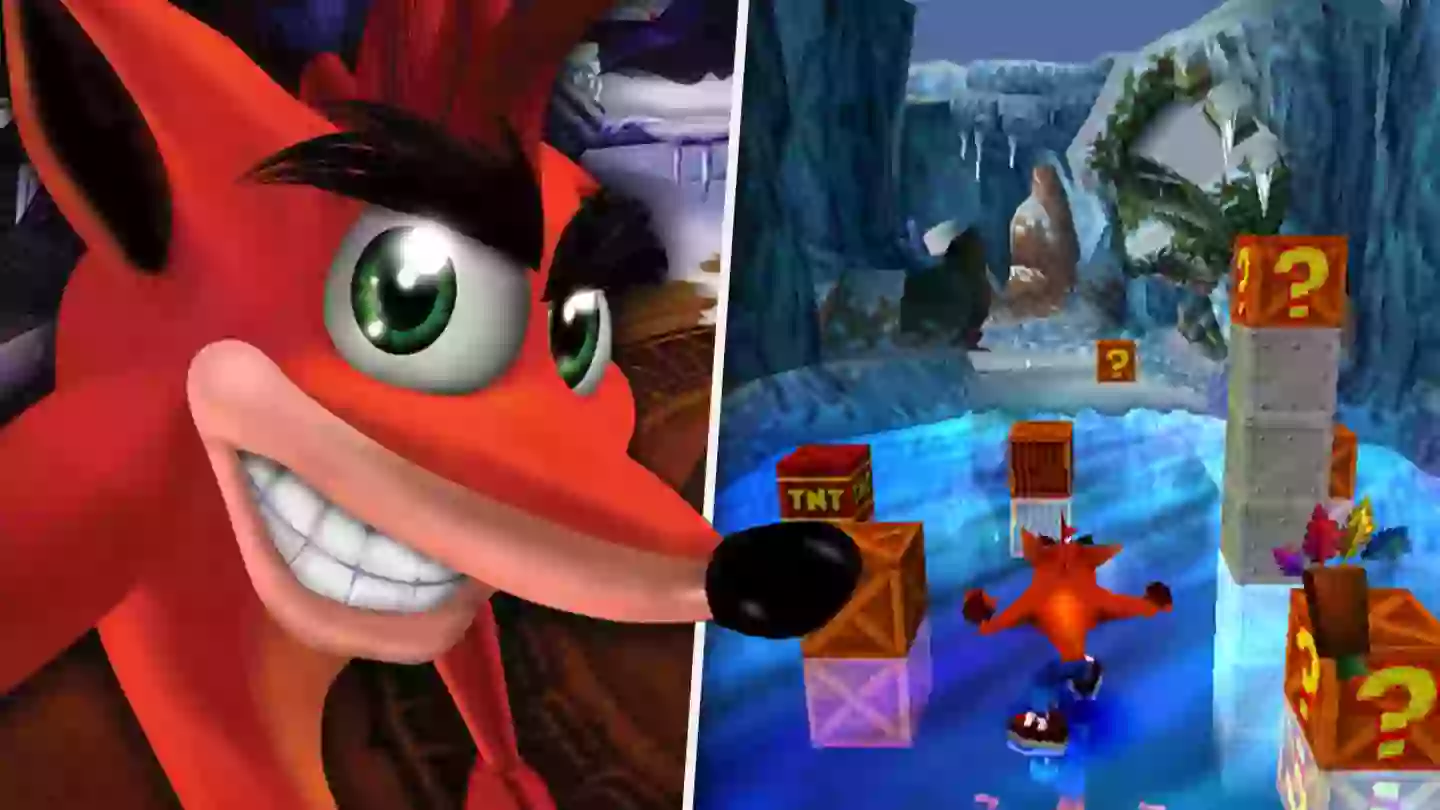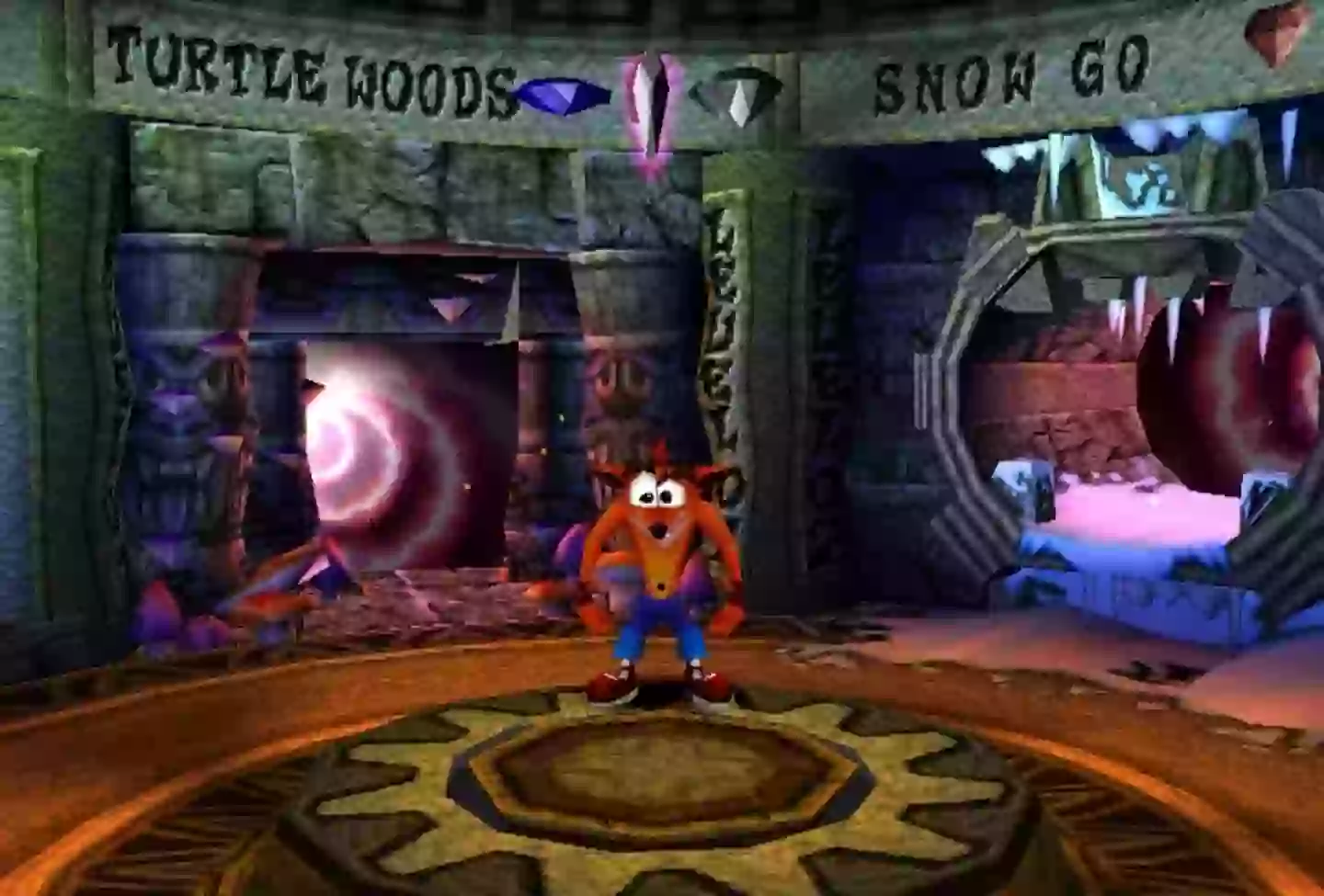
When I think back to my earliest days of gaming, I think of Crash Bandicoot. This month, Naughty Dog’s Crash Bandicoot 2: Cortex Strikes Back turns 25 years old which is rather fitting as so do I. With that fact in mind, I can’t claim to have played Cortex Strikes Back on release day but as soon as I knew how to turn on a PlayStation, you best bet that that was the game I loaded up. When I claim that Cortex Strikes Back is one of the all-time best platformers, I do say that with the rose-tinted lenses of childhood, but there’s unbiased truth in it too. Cortex Strikes Back embodies the very best of the platforming genre.
I was horrified to learn that my GAMINGbible colleagues don’t consider Cortex Strikes Back to be one of the best games of the 1990s. Consider this an enlightenment. Crash Bandicoot games may not be easy, but there is a nice simplicity about them. You have to get from A to B. That’s it. It’s a formula that can be equal parts straightforward and infuriatingly difficult. This is where Cortex Strikes Back solidifies its place as the best title in the franchise. As much as I adore the original Crash Bandicoot and Crash Bandicoot 3: Warped, both games contain levels that I can get stuck on for days. I’m a firm believer that a game ceases to be fun if you can’t progress and I’m sure some players gave up on the aforementioned titles for that very reason.
PlayStation exclusives are just as important to Sony today as they were back when Crash Bandicoot 2: Cortex Strikes Back was released. Are you excited for upcoming exclusive God Of War Ragnarök? Take a look at the trailer below.
Crash Bandicoot 2: Cortex Strikes Back’s levels are much more considered than those of both the game’s predecessor and sequel. It’s as if the developers thought about the player and not just placing a sequence of obstacles. When it comes to Cortex Strikes Back, ‘Bee-Having’ sticks out in my mind as giving me the most grief. It’s a level where you’re essentially chased by bees in addition to the usual platforming fare. I got stung and therefore died on multiple occasions yet with each attempt, I edged further and further towards completion - mastering when was best to sacrifice an Aku Aku to help me get to the next checkpoint and when to dive into the safety of this level’s mud patches. Considering it was one of the game’s most challenging levels, it was a far cry from Crash Bandicoot’s deadly ‘The High Road’ which, if you ask me, requires pure luck to survive.
Advert
What’s more, Cortex Strikes Back also introduced variety into the franchise with many of the following elements later becoming intrinsic to the franchise’s identity. We got to meet Coco, Crash’s sister, for the first time and let’s not forget Polar, the adorable polar bear cub later adopted by Crash. Even if it’s been years since I last picked up Cortex Strikes Back, I always remember the secret stash of lives that Polar hides in the Warp Room. It’s something my brain has retained for years. Why? That’s just the nostalgic hold this game has on me.

I hear you, dearest reader. I can’t claim that Cortex Strikes Back is one of the all-time best platformers simply because of my nostalgic haze surrounding it. Consider this: Platformers were built on the fundamentals of jumping, running, and climbing. Cortex Strikes Back’s addition of the polar bear and jet ski levels injected originality and variety into the genre, and you cannot overlook the genius introduction of the Warp Room. Gone are the days of being stuck on a single level, unable to progress. The Warp Room allows you to try your hand at a couple of others before coming back and that spells the difference between abandoning and sticking with a platformer. That’s not to mention the simple yet entertaining story and graphical improvements. Believe me now? Opening up Cortex Strikes Back’s very first level, ‘Turtle Beach,’ is my gaming equivalent of coming home. Cortex Strikes Back is familiar and comforting, but it’s also a darn good game. Happy birthday Crash.
Topics: Crash Bandicoot, PlayStation, Opinion, Retro Gaming